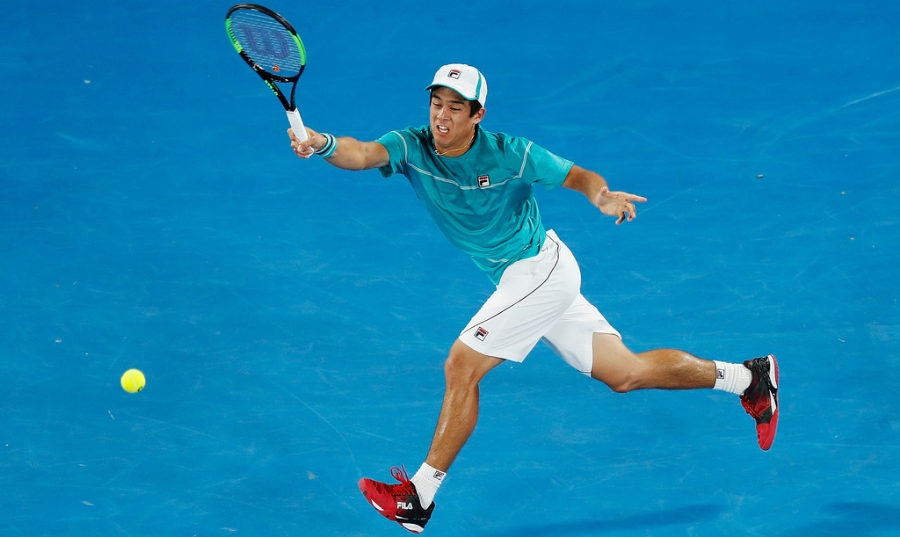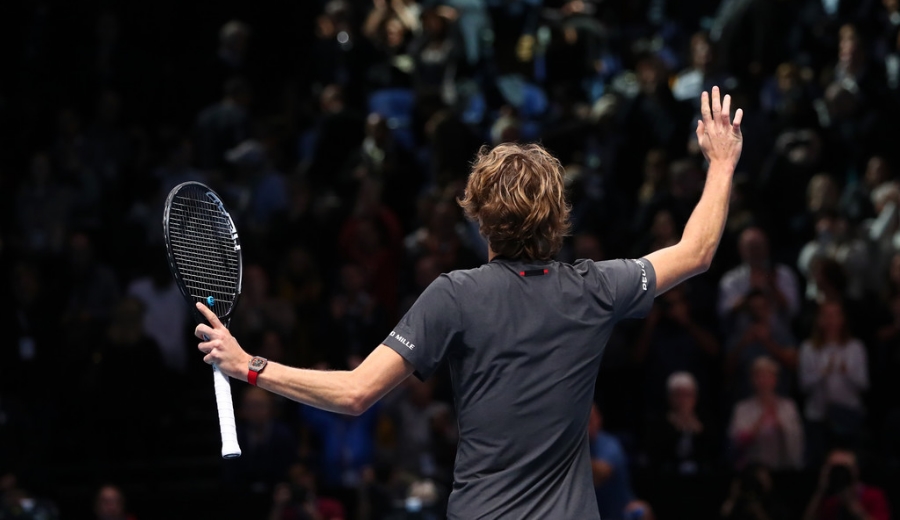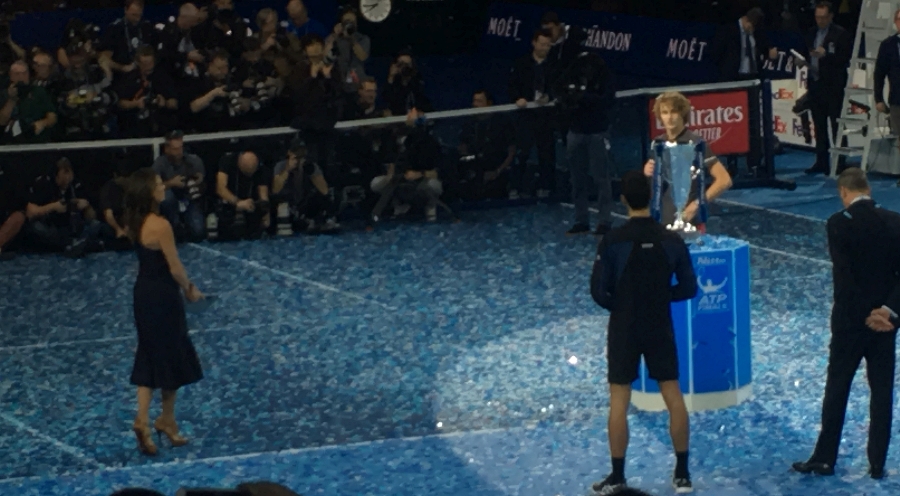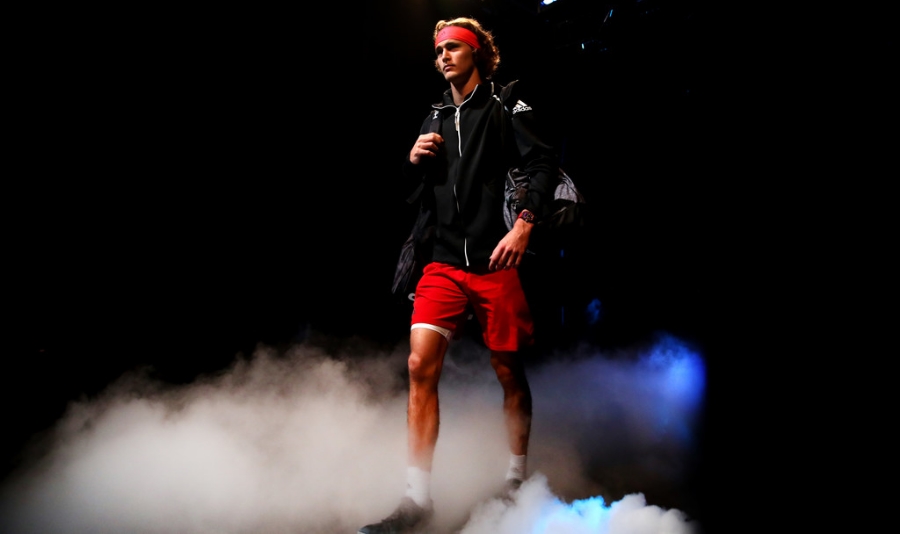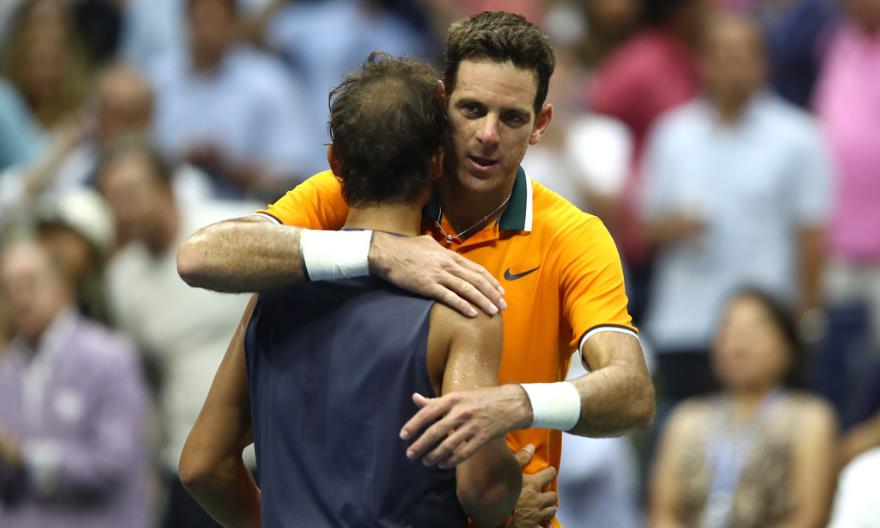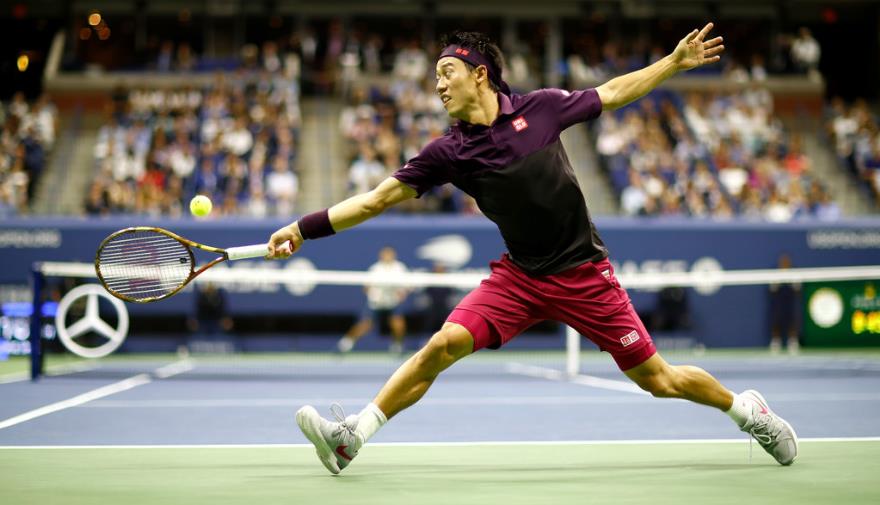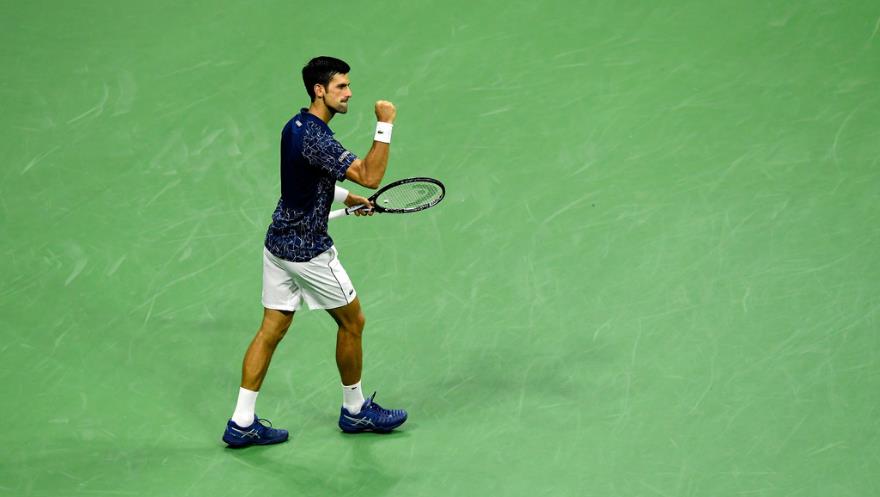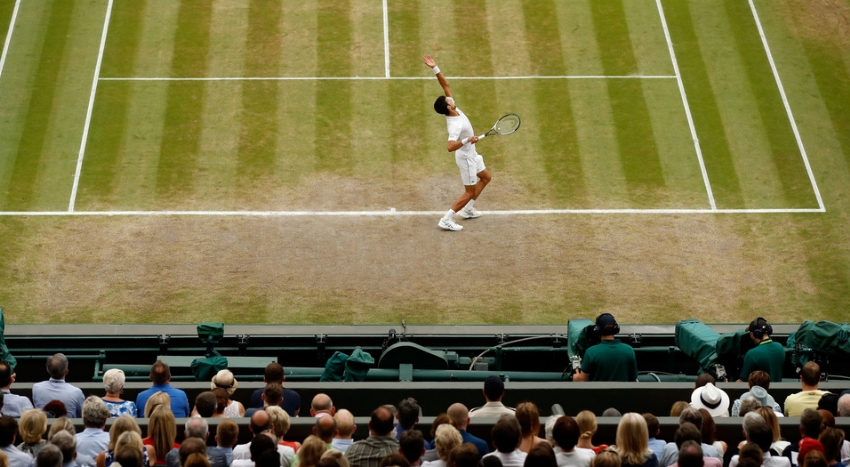If you are a fan of Kei Nishikori, your hair already turned gray by a few tones this week, and we are still a full day away from the first weekend of the Australian Open. If you are not familiar with what I mean, let me see if I can recap what they witnessed in the last 72 hours, in one long sentence.
After a first-round match two days earlier that must have resembled a nightmare to Kei himself for the first hour and a half before he turned it around, partially benefiting from the physical woes of his opponent Kamil Majchrzak, the number-eight seed survived a nightmare of a different kind in the second round vs. Ivo Karlovic, one in which, following a dreamy couple of sets where his game clicked on all cylinders, he saw his serve broken once each in the late stages of the third and fourth sets, and found himself down three break points at 4-4 in the fifth, before he finally put away the big Croat who blitzed 59 aces past him in a match that needed the newly adopted 10-point tiebreaker to come to an end.
The final score was 6-3 7-6 5-7 5-7 7-6 (10-7). It lasted 3 hours and 48 minutes.
Nishikori is in the third round, but there is enough cause for concern if you are in Kei’s camp, for a very specific reason. Before I point out that reason, let me first make another point.
Nobody can dispute the fact that this 2019 edition of the Australian Open is in the rackets of the big 3, so to speak, Novak Djokovic, Rafael Nadal, and Roger Federer. Until someone else makes a mammoth breakthrough (and yes, the adjective is appropriate considering how they have been dominating the Majors), any other player’s shot at winning one of the four Grand Slam events remains an outside shot at best.
Having said that, if you were forced to pick an outsider to lift the winner’s trophy on that second Sunday, Nishikori may have been one of the few fair choices other than Kevin Anderson (ousted already), Marin Cilic, and maybe one or two others of your choosing. So, these two weeks represent a monumental opportunity for Nishikori to break through, stun the world of tennis, and grab that elusive elite title that would do wonders to his otherwise very respectable resumé. Plus, he came to the tournament in good form, at the heels of a successful comeback from injury after missing last year’s Australian Open. He returned to ATP-tour level competition in New York in February and steadily rose all the way to top 10 by the end of the year. It’s a remarkable comeback that was only overshadowed by Novak Djokovic’s comeback to number one in the world.
What better way to crown the impressive 10 months Nishikori just had than with his first Major title!
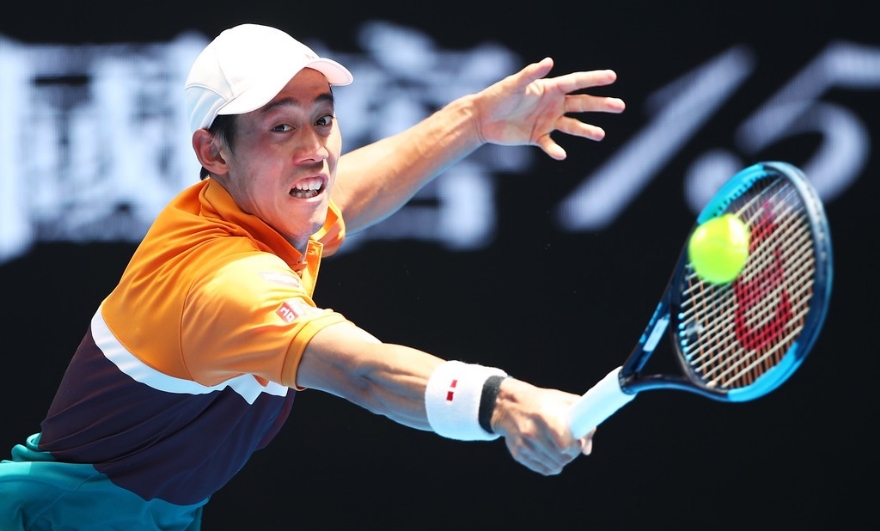
Yet, the reality is that Kei’s biggest nemesis is not the big 3. And that brings me to my central point.
Playing 10 sets (ok, nine and a half) just to reach the third round is anything but ideal for the Japanese star. Kei, whose career has been halted more than once by injuries, cannot be expected to pull an Edberg-1992 or even a Federer-2017 where the winners pulled five-set wins in the three out of four matches in their last four rounds, let alone having a couple or more of those in the first week to begin with, the way Nishikori has so far this week. His nemesis – I reiterate, it is not Novak, Rafa, or Roger – will likely rear its ugly head again unless Kei can get in a couple of short-duration wins in the next round or two.
Having said that, there is a silver lining in what Nishikori has achieved this week. Or, I should more specifically say, in the way that he has earned the two wins.
Out of the ten sets that he has played, one would have a hard time pointing to any one of them and say that his performance was subpar. Furthermore, he has not allowed the downturns in either of the matches to obnubilate his tactical vision or dampen his spirit.
He first had to deal with a youngster who came out firing and outplaying him for two sets. Nishikori remained steady on course and collected the fruits of his hard labor when Majchrzak began running out of steam. Then, against Karlovic on Thursday, he faced a completely different set of challenges and still managed to overcome the hurdle.
One can easily say that 59 aces in an extended five-setter is not a startling number by Dr. Ivo’s standards. Since time immemorial, his opponents have walked on the court against him, expecting to get aced frequently. In order to counterbalance that effect, they aim to get back in the court as many returns as possible out of the ones that they can get their rackets on, so that Karlovic can have a shot at maybe missing a routine volley at a crucial juncture in the match. Beyond that, the occasional appeal to the skies in hopes that he chucks in a couple of double faults may also prove helpful, no?
Nishikori succeeded in going above and beyond the above. He not only got plenty of returns back in the court when he could get his racket on the serve – and he often did, because his first-step is awfully quick – but managed to nail a large number of them down to Karlovic’s ankles, forcing the big Croat to resort to placements volleys rather than straight put-away ones. Even when Ivo got the first volley back over the net, he found himself staring at Kei getting ready to zoom a passing shot by him. And Nishikori did all that with Karlovic serving at… wait for it… 79% first serves for the match! Add 59 aces to that and it’s almost miraculous that Nishikori was even able to break once!
Then, there was Nishikori’s own serving. He served at a whopping 90% first serves until the tiebreaker of the second set and finished the match at 83%. He often served and volleyed, taking advantage of Karlovic’s floating returns to put his (underrated) volleys away. He did not face a break point in the first two sets and faced only two in the next two sets. The problem is that he lost both of those break points, and they came at the late stages of each set, causing him to go down 7-5 in both.
Karlovic’s first break (the one in the third set) was a key one. He needed that to start re-nurturing his belief. At 5-5 on Nishikori’s serve, he nailed a cross-court winner at 0-15. He followed that up with a monstrous return to the middle of the court that caused Nishikori to miss in the net. That eventually led to a blank-game break by Ivo who had not really come close to breaking his opponent’s serve for almost three sets until then.
You could tell that Karlovic’s confidence was growing at that point. His body language went up a level in the positive-vibes department. And when Dr. Ivo feels good, his second-serve performance catapults to impressive levels to complement his bazooka first serves. He won below 50% of his second-serve points in the first two sets, whereas in the last three, he recorded 67%, 80%, and 75% success rates in points won with his second serve. Don’t think Nishikori did not notice: “[Karlovic] was really serving well today, I think, even the second serve.” Kei had only two break-point opportunities (both in the fourth set) after he got broken in that 5-5 game in the third. He also confirmed after the match that Karlovic “mixed up really well” his serves “after [the] third set.”
Nishikori faced oblivion at 4-4 in the fifth. Down 0-40 on his serve, he managed somehow to remain cool as ice, despite horrendously gagging a high forehand volley in the net at 0-30 to dig that hole for himself. They were “virtual match points” for Ivo, quoting Paul Annacone on the Tennis Channel, yet Kei remained error-free for the next five points, and it was Karlovic whose elbow got heavy. Ivo had chances to approach the net in the second and third break points but stayed at the baseline. He really should have ‘pulled a Colin Dowdeswell’ (who remembers that guy?) and chipped and charged from anywhere on the court to get up to the net. Nishikori, contrary to the first two sets, was feeling the heat during that period of the match and had missed some makeable passing shots earlier in the fifth set. Why not test him again? But Ivo chose the option not to instead, and he paid dearly. Five points in a row won by Nishikori, all resulting in Karlovic errors (the one at 30-40 was an unforced forehand error), and the world number nine held serve to lead 5-4.
It was only fitting that the final set would end in a 10-point tiebreaker.
Nishikori got an early mini-break, an advantage that he kept until 6-5. A big return by Karlovic erased that lead and in the ensuing point, Nishikori had an easy put-away on top of the net that he struck inside-out on his forehand, but Karlovic guessed the right side and passed Kei in the open court. Just like that, Karlovic was now up a mini-break at 7-6, and Nishikori’s chances looked bleak once more. Yet again, he did not lose his composure. After a little ‘nudge’ by Karlovic who made a forehand error to lose his mini-break advantage, Nishikori hit a great return (his umpteenth of the match) at 7-7 that forced Karlovic to lunge at the backhand volley and miss.
Now leading at 8-7, Nishikori simply needed to win his two serving points to close the curtain. He did so with two solid serves that Karlovic could not get back in the court.
Karlovic, who will turn 40 next month, got a well-deserved standing ovation from the pro-Nishikori crowd as he left Margaret Court Arena.
As for Nishikori, the question remains, can he sustain his physical prowess in the second week if he has to battle this hard in the early rounds? He remains optimistic: “Yeah, these two matches can go, you know, I could lose these two matches. So yeah, I just need to recover well. But, I mean, it’s only two matches yet, so I’m not too tired yet.”
He will face Joao Sousa who also survived a testing five-setter (4h18m) against Philip Kohlschreiber and has also played ten sets going into the third round. Whether that is another silver lining or not for Nishikori remains to be seen. In any case, Kei will need to find an easy win or two before reaching the quarterfinals in order to have a legitimate shot at upsetting the top players in the second week. Facing a pesky competitor like Sousa in the third round does not sound promising in reaching that goal, but Nishikori’s camp can take comfort in knowing that the quality of his tennis is unlikely waver. It’s just that he will need to defeat the player on the other side of the net and that other nemesis looming large on the horizon, waiting for him to push his physical limits to the edge.
[source for the Nishikori quotes: Australian Open website]

